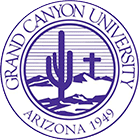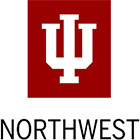University Headquarters (HQ) is an industry-leading, independent educational organization that provides independent college rankings using a proprietary formula to create first class unbiased rankings. The team at University HQ strives to provide accurate and trustworthy rankings that highlights the best programs.
What's a Low GPA?
If you're nearing graduation, you might be concerned about your GPA, especially if it's lower than what top schools require. While GPA is important, it's not the only factor. Other elements, like your SAT or ACT scores and personal statement, also play a significant role in college admissions.
GPA stands for grade point average. Most universities and colleges use the 4.0 grading scale. This means 4.0 is an A, 3.0 a B, 2.0 a C, 1.0 a D and anything below is an F. Some universities consider anything below a 3.0 to be a low GPA - others set the bar at 3.5. On a positive note, high school GPAs have been going up for the past few decades. As of 2021, average high school GPAs sat at about a 3.36.
All of this means that, if your GPA finished at lower than the average of 3.0, then schools will likely feel that you have a low GPA. Again, this doesn’t mean that you can’t go to college. Most colleges use other criteria to help them make their admission decisions, not just your GPA.
Is This the Main Factor for College Admission?
Your GPA is important for admissions officials and, when they consider your request for admission, they certainly factor it in. But, if your GPA isn’t as high as it could be, you aren’t completely out of luck. Admissions personnel look at a multiplicity of factors that you present or submit when you apply for admission. These other factors can be given considerable importance along with your admission test scores, high school grades, and the strength of your curriculum.
However, different colleges and universities take other factors into consideration. A liberal arts college may look more closely at your personal statement, a top university may focus on personal achievement as much as it does academic achievement, and public universities may focus mainly on test scores and GPA.
Factors to Help You Get Accepted with a Low GPA
Letters of Recommendation
At some colleges, letters of recommendation may carry more weight than your GPA, especially for programs like arts degrees or niche fields. These schools value a professional perspective on your character and abilities, not just your academic record. Letters should come from people who know you well. For example, if you took AP German, your teacher, who interacted with you and other students closely, would be able to speak to your strengths beyond grades.
Personal Statement
The personal statement is your chance to show colleges who you are, why you want to attend their school, and how their program aligns with your goals. It’s a chance to highlight your aspirations, education, and future plans.
Writing a strong personal statement isn’t easy, but it’s important to focus on your own story and avoid copying others. You need to communicate who you are in under 4,000 characters. For example, if you're pursuing a journalism major, you can mention relevant experience like working on your high school yearbook or newspaper. Share what you've learned about your strengths and how past experiences have shaped your career goals.
Extracurriculars
Extracurricular activities are important, but don’t overcommit, as it could impact your grades. Focus on one or two activities that matter most to you. Being recognized or holding a leadership role, like vice president of a club, can enhance your application.
For example, if you're involved in a community service group, highlighting that on your application will be a plus. While college applications may allow up to 10 extracurriculars, it's not necessary to fill all the spaces. Prioritize activities that align with your interests and career goals, while also leaving time for rest and balance.
SAT/ACT Scores
College SAT test scores are important but they don’t tell the whole picture about your knowledge or your past grading history.
As soon as you’ve signed up for your SAT exam, you may begin hearing from different colleges because your academic history and your test scores may be shared with these schools; you have the chance to decide if you want your name provided to these schools or not. One reason to let colleges know about you is that during their search for you and your search for the school you want, they may offer scholarships based on your test scores or other factors.
Work Experience
Your work experience is an important part of your application, showcasing your time management skills and personal growth. Being reliable at work reflects your ability to balance responsibilities, which colleges value.
Maintaining a study schedule while working can be challenging, but it demonstrates your ability to handle multiple tasks, a skill useful for group projects in college. If your earnings are helping fund your education, mentioning this shows your commitment to your future and the college experience.
What is Conditional Acceptance?
Put simply, a conditional acceptance from a college of your choice means that, if you do something it requests, then it will admit you. For instance, the admissions office may request that you take a year of classes at a different college, then transfer to their campus. Or, you’ll be admitted fully if you take a summer class and pass it. This means that, while you won’t be on that campus in the fall, your application is placed on conditional acceptance and, if you meet that condition, you should be fully admitted.
You may have been offered conditional acceptance due to a grade being lower than the college wanted to see, especially if the class wasn’t a challenging one. Conditional acceptances are in that middle ground, between an outright “yes” or “no”. This means that they want you as a student, but they need to see how serious you are about your college education.
What is Open Enrollment and Admissions?
While conditional admission means you have to meet a specific condition set by the college you want to attend, open admission is quite different. Open admission means that the college is non-competitive in its admissions policy. For most of these universities, the only real requirement is that students wanting to attend should have a high school diploma. A GED certificate may also be acceptable. Which schools have an open admission policy? Generally, community colleges or four-year colleges that also grant associate degrees have open admission policies.
Open admission policies became more popular in the 1960s and 1970s. These colleges didn’t want low GPAs, lack of college testing scores, or other admissions criteria to keep low-income or otherwise underprivileged students from enrolling in a college. By casting their nets widely, these schools often find they have students with high potential in their student population.
Featured Online Programs
Traditional Colleges that Accept a Low GPA
Western Governors University

This private, not-for-profit university relies on their students to have some core competencies to succeed in their courses. Their criteria include mastery of needed knowledge and skills instead of earning credit hours. Western Governors University school’s admissions rate is 100% and their graduation rate is 51%. The average annual net price cost at WGU is $9,555 for the academic year of 2022-2023.
Weber State University (Hybrid)

Weber State University is a public, not-for-profit university posts an average annual cost of $12,061. Student financial aid makes paying for tuition and all associated costs a little easier. The retention rate is 68% and the graduation rate is 43%. The school’s 4-year graduation rate is 15%. However, its admissions rate is 100%; accepted students who have taken their ACT exam have scores ranging between 18 and 24.
Grand Canyon University

Located in Phoenix, Arizona, Grand Canyon University is a private, not-for-profit university. After nearly going bankrupt, GCU retooled and now offers online instruction to more than 60,000 students. Almost half of students, though not all of those enrolled, are graduate students.
GCU’s approach to open enrollment requests student transcripts, evaluates coursework, then arrives at an anticipated graduation date 24 hours after receiving an admission request. The average net price cost each year at this school is around $22,239; the retention rate is 70% and the graduation rate is 43%.
UNH College of Professional Studies (formerly) Granite State College

Located in Concord, New Hampshire, GSC offers both face-to-face and online instruction. With its open enrollment policy, GSC provides access to classes in whatever way is easiest for students to access. The belief that the ability to earn a college degree should be provided to working adults and students alike is at the heart of their policies.
About 90% of the student population receives financial aid. The average net price cost each year is $11,851 once financial aid has paid for the bulk of costs. The retention rate is 40% and the graduation rate is 14%.
SUNY Empire State University

ESC has more than 35 locates in New York State and offers 500 online courses. ESC also offers associate degrees along with its bachelor’s and graduate degrees. Its open admission policy allows students to attend college who would not otherwise have this opportunity.
The school’s retention rate is 59% and its graduation rate is 29%. The average net price cost is $11,065 each year, which is the amount remaining once financial aid has paid for the bulk of tuition and fees.
Bellevue University

In Bellevue, Nebraska, Bellevue University offers a top-notch education to its students. Its open admissions policy attracts students and, using a “real mastery” approach, the university assists students to master the skills and knowledge they need to satisfy future employers. Class schedules are flexible; by moving to hybrid or online classes, students find it easier to access their classes.
The average net price cost this year is $25,735 after financial aid has been applied. The retention rate is 51% and the graduation rate 56%.
Colorado Technical University

Located in beautiful Colorado Springs, CTU was first intended to help veterans of the US armed forces make an easier transition into the civilian world. The university’s online programs are considered to be one of the best in the US. The average net price cost of attendance is $14,784, with 86% of the student population receiving financial aid. The retention rate is 46% and the graduation rate is 18%.
Wayne State College

Located in Wayne, Nebraska, this college offers in-person and online classes. Wayne State College's retention rate stands at 72% and the graduation rate is 51% (this is about average). The average net price for students of Wayne State is $14,271 after all financial aid has been applied.
Salem University

Located in Salem, West Virginia, this university was founded by the church of Seventh Day Adventists in 1888. The school’s programs are focused in the liberal arts. Students take one course per month, allowing them to give full attention to the assignments for that class alone. Even with this type of schedule, students advance quickly. Students from associate to doctoral levels are able to gain admission.
The average net price is $13,132 after financial aid, with 95% of the student population receiving aid. The retention rate is 57% and the graduation rate is 29%.
Sullivan University

Located in Kentucky, Sullivan University was first a business college. As an open admission university, Sullivan knows it has the ability to help its students begin their careers.
Sullivan also offers degrees ranging from associate up to doctoral degrees. The average net price cost is $19,537, with 93% of students receiving financial aid. The graduation rate is 27%.
Find Your College
Online Higher Education Schools that Accept Low GPA's
Indiana University-Northwest

In Gary, Indiana University Northwest has an admissions rate of 79%. They generally require at least a GPA of 2.0 for admission. Its retention rate is 68% and the 6-year graduation rate is 37%. They also have an 8-year grad rate of 40%. The average net price for in-state students is $5,553; this is the amount remaining once a student’s financial aid has been applied.
University of Colorado Colorado Springs

University of Colorado-Colorado Springs doesn’t have any specific requirements for GPAs, focusing more strongly on ACT/SAT scores. The admission rate for this school is 92%, meaning it isn’t too competitive. The retention rate is 67% and its graduation rate after 6 years is 45%. The 8-year graduation rate is 46%. The average net price for in-state students is $16,816, meaning that those with an economic disadvantage can still attend and expect to receive a solid return on their investment (ROI).
University of Massachusetts Dartmouth

Located in North Dartmouth, Massachusetts, Umass Dartmouth’s admissions rate is quite high at 77.5%. The school’s retention rate is a similar 67% and the 6-year graduation rate is 49%. The 8-year graduation rate is similar at 55%. The average net price for in-state students is $20,696. This is what remains for families to pay once financial aid has kicked in.
University of Maine at Presque Isle

In Presque Isle, this university does require a GPA of 3.0. While this is still considered below average, it still shows that you accomplished much in your high school years. The admissions rate is 91%. The retention rate hovers at 58%, which is lower than average. The school’s graduation rate is 38% after 6 years; after 8 years, this is 35%. The average net price cost is $9,773, after financial aid has paid the bulk of tuition and fees.
University of Illinois Chicago

Located in Chicago, this university does require a GPA of 3.1. This is still slightly lower than the national average. The admissions rate is 72%, making the school lightly competitive. The retention rate of UIC is 78%, which is better than average. The graduation rate at 6 years is 60%; after another two years, the graduation rate is 64%. The average net price is $11,499.
Louisiana State University Shreveport

Located in Shreveport, LSU’s admissions rate is 81%, making it lightly selective. The school requires a GPA of only 2.0. The retention rate of 65% falls below the national average, meaning freshmen may transfer out to other schools before their sophomore year quite often. The graduation rate at 6 years is 33%; after 8 years, this is 40%. The average net price at LSU-Shreveport is $7,554, which reflects what students will pay once financial aid has been applied to the full sticker price.
Texas A&M University-Corpus Christi

Located in Corpus Christi, Texas, Texas A&M Corpus Christi is not too competitive for admission rate. Students do need to submit their high school GPA and SAT/ACT scores. Even so, the admissions rate is 87%. The retention rate at this university is 63%. This is lower than average, meaning that students entering their second year of school may transfer to a different university. However, this may be because their first year here gave them enough of a boost to their applications to get into a school they preferred. The 6-year graduation rate is 34%; the 8-year graduation rate is 38%. The average net price for a student at Texas A&M-Corpus Christi is $14,991. However, families at different income levels pay different amounts.
University of Washington-Tacoma

Accepting students with GPAs mostly in the low 3.0 range, the University of Washington Tacoma is classified as lightly selective. Its admissions rate is 85%. Hopeful students still have to submit GPAs and college exam scores. However, the retention rate at UW-Tacoma is better than average at 75%. Students moving into their second year of school often choose to remain here. The graduation rate here is also good. At the 6-year mark, this is 62%; at the 8-year mark, it decreases slightly to 59%. The average net price for students and their families is $11,290, after financial aid has been applied.
University of Michigan-Flint

The University of Michigan at Flint is more competitive; prospective students are expected to submit GPAs and SAT/ACT scores. The admission rate here is 65%. The retention rate at UM-Flint is also better than the average at 77%. The nationwide rate is 68%. The 4-year graduation rate for UM-Flint is slightly less than 45%. At the 6-year mark, this is 45%; if students stay on for two more years, this moves down slightly to 40%. Students and their families pay an average net price of $12,344.
University of Maryland Eastern Shore

The University of Maryland Eastern Shore is more competitive, meaning students have to strive harder to get in. The admissions rate is 54%. Additionally, the retention rate for the University of Maryland Eastern Shore doesn’t necessarily fit the promise of the admission rate - it’s only 64%, meaning not many freshmen continue on at this university into their sophomore year. The graduation rate is also lower than anticipated: for the 6-year rate it is 35%; for the 8-year rate, it climbs slightly to 36%. The average net price for students and families is $14,595.
Higher Education Graduate Programs that Accept a Low GPA
Midwest Institute

Located in Earth City, Missouri, Midwest institute is a technical school that offers popular vocational degrees to its students. With an admission rate of 100%, Midwest Institute is ready to accept students who don’t have high GPAs. Midwest does request that students have their high school diplomas or GED certificates, but this is not required. The graduation rate here is 65% and the retention rate is 76%, close to the national average. The average net price for students is $16,390.
Albany State University

Albany State University, in Albany, Georgia, accepts students who have a 2.0 high school GPA. This makes the school easy to enter, as long as students have the documentation required by the admissions office. Other admission requirements include SAT and ACT scores. The admission rate is 100% and the retention rate is 68%, which is roughly average. The graduation rate is 23%. The average net price for students and their families is $13,775.
North Carolina State University at Raleigh

North Carolina State University at Raleigh accepts students with a 2.0 GPA. Applicants must submit proof of their high school diploma or GED certificate along with their admission application. Official transcripts from all previous colleges attended are also required. If the student has poor grades, they may be able to gain admission if they show proof of their ability to succeed in the classroom. The admission rate is 51%, which says the college is relatively competitive. The retention rate is also 94%, which is much higher than average. The graduation rate is 85% and the average net price per year is $14,860.
University of Houston-Clear Lake

In Houston Texas, University of Houston-Clear Lake accepts students with a 2.0 GPA, though SAT/ACT scores and official high school transcripts are required. The retention rate is 67%; the graduation rate is 51% and the average net price is $10,488.
Search All Programs
